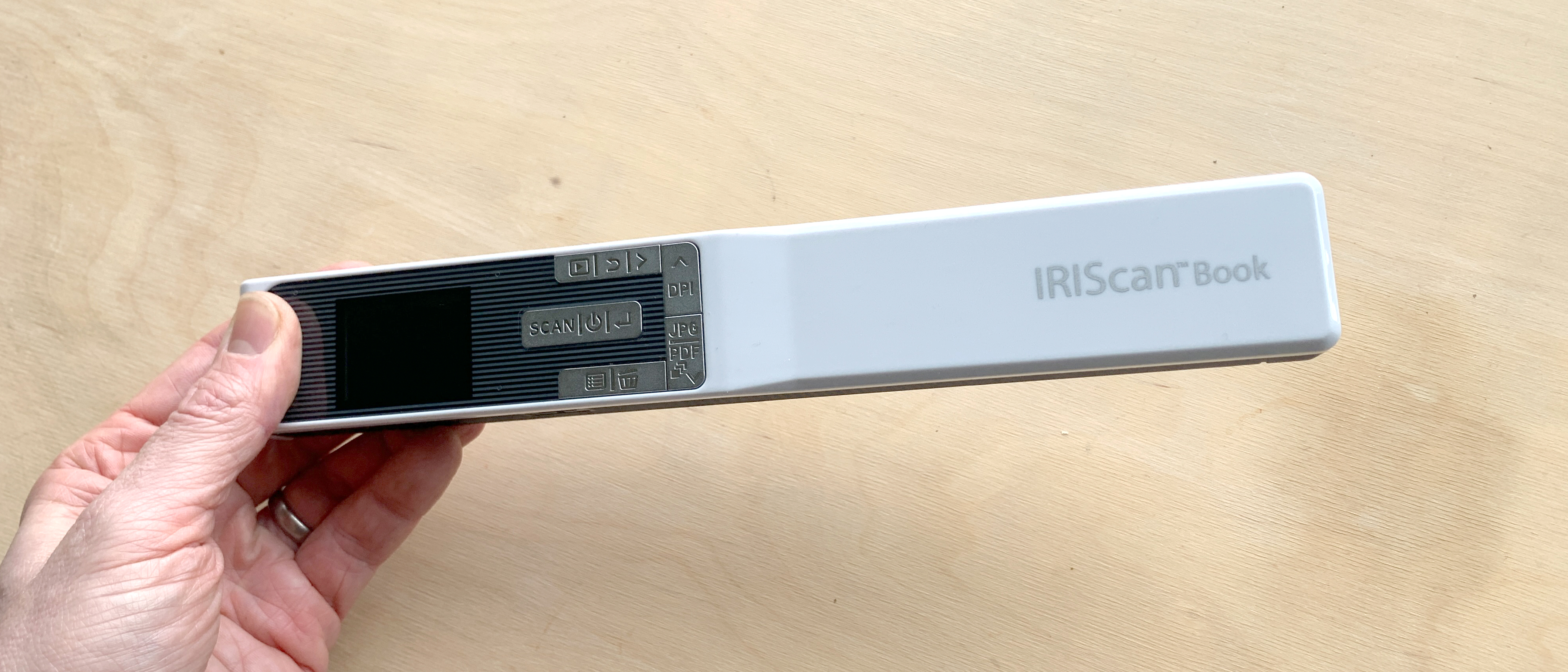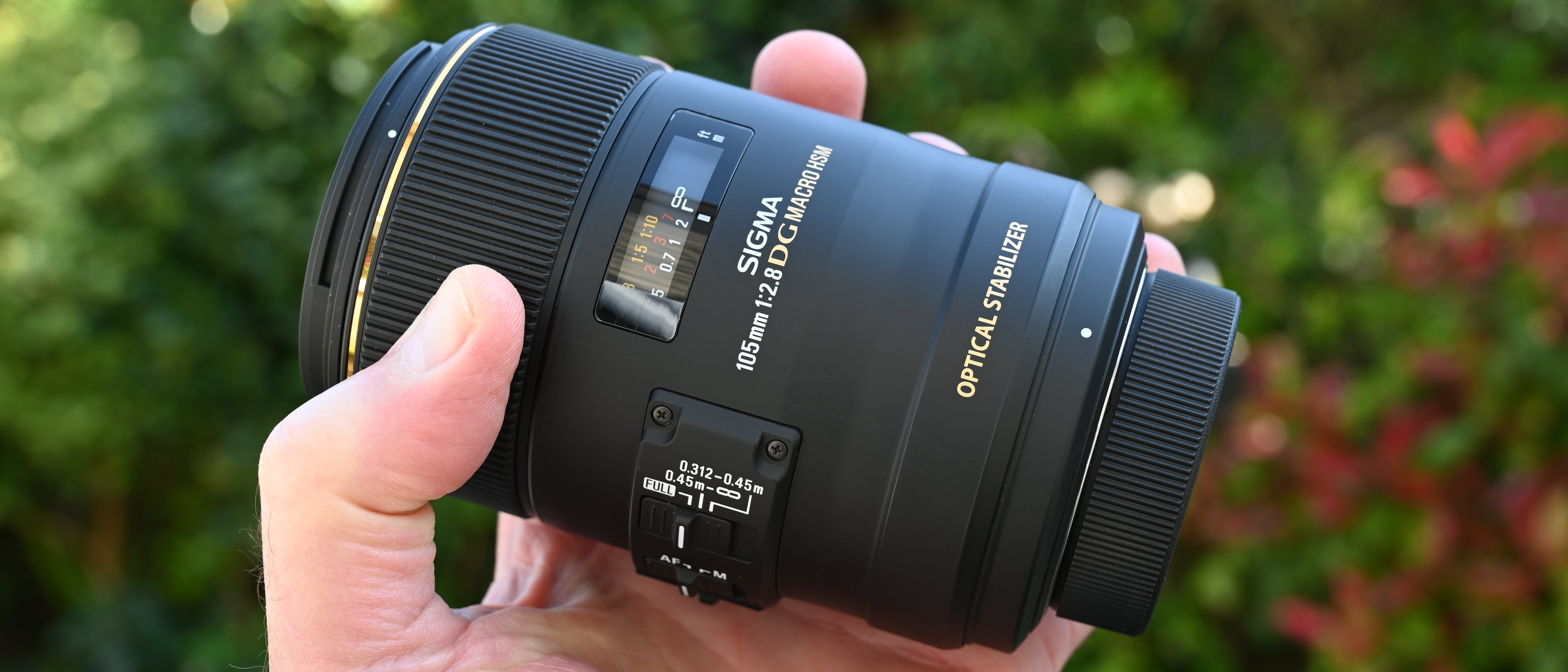Digital Camera World Verdict
The IRIScan Book 5 scanner is one of the best wand style scanners on the market at the moment. Being able to save scans to a microSD card means you don't even need a computer to do the scanning. Scans are captured at a high resolution, up to 1200 dpi, and color replication is accurate enough. It is also possible to digitize text, down to 8 pt, thanks to OCR functionality. Operating the device to get the best results takes a little bit of practice, but the lightweight design and guide rollers help to make this process as simple as possible. The battery life is where the Book 5 begins to struggle with the loss of charge being a regular occurence. I ended up choosing to keep it connected to my laptop during scanning, which although far from ideal, did give me the confidence that it wasn't going to cut out.
Pros
- +
Light and portable
- +
Scans directly to MicroSD
- +
iOS and Android app
Cons
- -
Unchanged for a number of years
- -
Compulsory to register for software
- -
Not Mac compatible
Why you can trust Digital Camera World
The IRIScan Book 5 has an impressive set of specs for a wand style scanner. At 1200 dpi, you'll have no trouble scanning documents to an incredibly high resolution. Scanned files can also be printed to a blown up size thanks to the dpi. One of the biggest benefits of this scanner is that you can scan without needing a computer, thanks to the microSD functionality. It is also possible to scan to JPEG, PDF, and multi-page PDF.
This incredibly high resolution puts a lot of other wand or desk-based scanners to shame. The resolution ensures that all scanned data is captured at the highest quality and that printed scans are able to replicate the quality of the original. A 4GB microSD card will allow for 500 JPEG images at 1200 dpi. It is possible to reduce the dpi to 600 or 300 if you want to capture more scans on the card.
Documents can be scanned in different formats, including JPEG, PDF, or multi-page PDF. This makes it a perfect option for scanning a range of document types, including photos and written documents. The multi-page PDF saves having to collate scans afterward and instead brings multiple scans into one single document.
The small color screen displays all settings and a low-resolution preview after scanning. The screen size is more than enough for the purpose it is designed for, but you'll have to transfer scans to your computer to see if they are usable.
A full recharge will allow for 100 pages to be color-scanned at A4 and 300 dpi. This might be fine for people scanning documents from time to time, but it is far from sufficient for regular scanning.
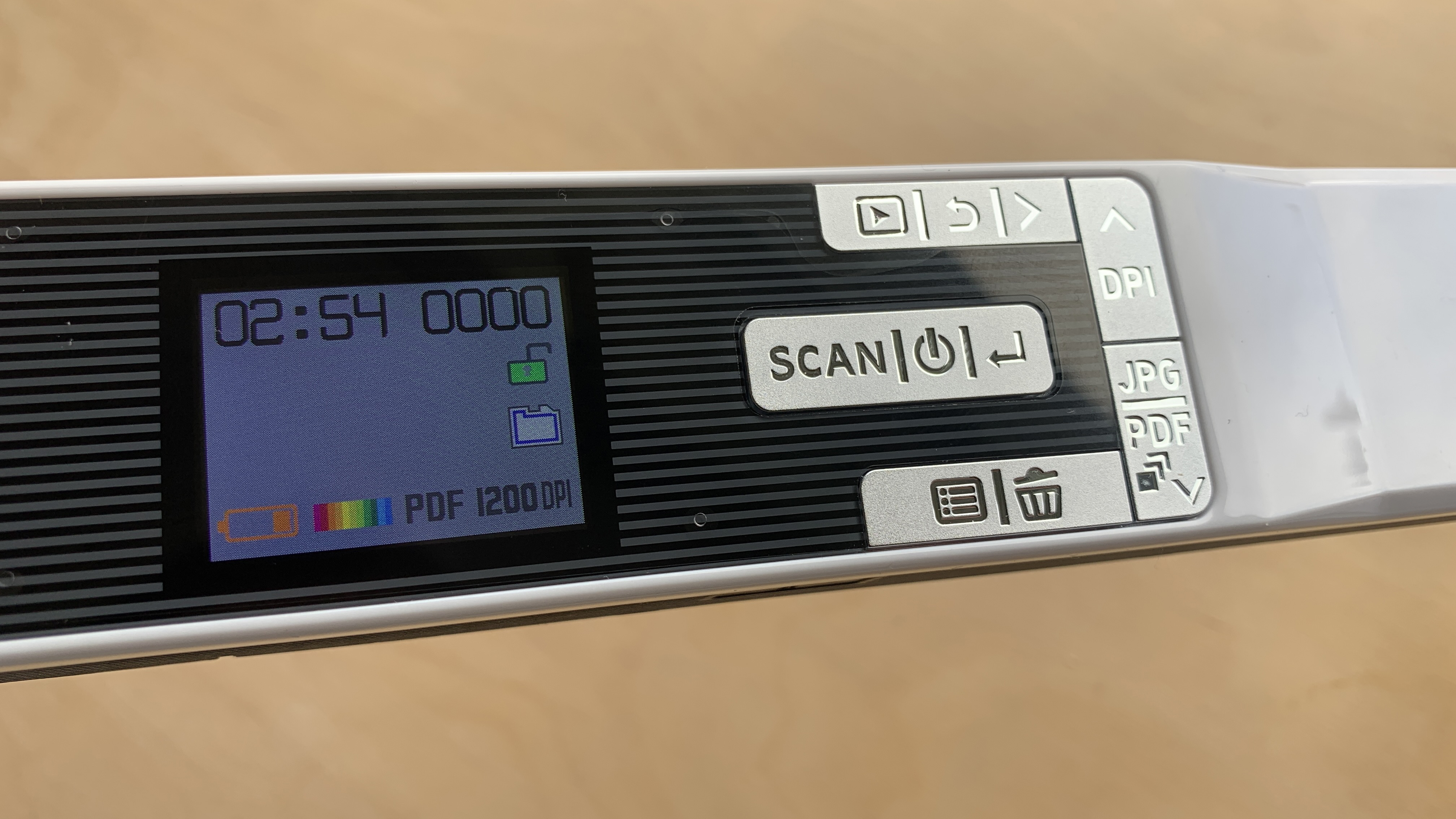
IRIScan Book 5: Specifications
| Resolution | 1200ppi |
| Scan Area | A4/Letter |
| Speed | 4 sec / page high resolution color |
| Max Resolution | 1200ppi |
| Live View | No |
| Connectivity | USB (+ Wifi with IRIScan Book 5 Wifi) |
| Size | 259 x 56 x 38 mm |
| Weight | 620g |
IRIScan Book 5: Design & Handling
The build quality of the Book 5 is in line with its budget price. The plastic construction and lightweight feel make this perfect for handling and scanning, but they do make it feel very cheap in the hand. The front panel is particularly weak, making it possible to press the plastic in towards the internal elements. Thankfully, the ribbed sides provide enough strength to give the overall device enough rigidity while scanning.
The operating buttons follow the same plastic design ethos. The operation of these is satisfactory, although it can, at times, be difficult to be sure which part of a button is being pressed at any point in time.
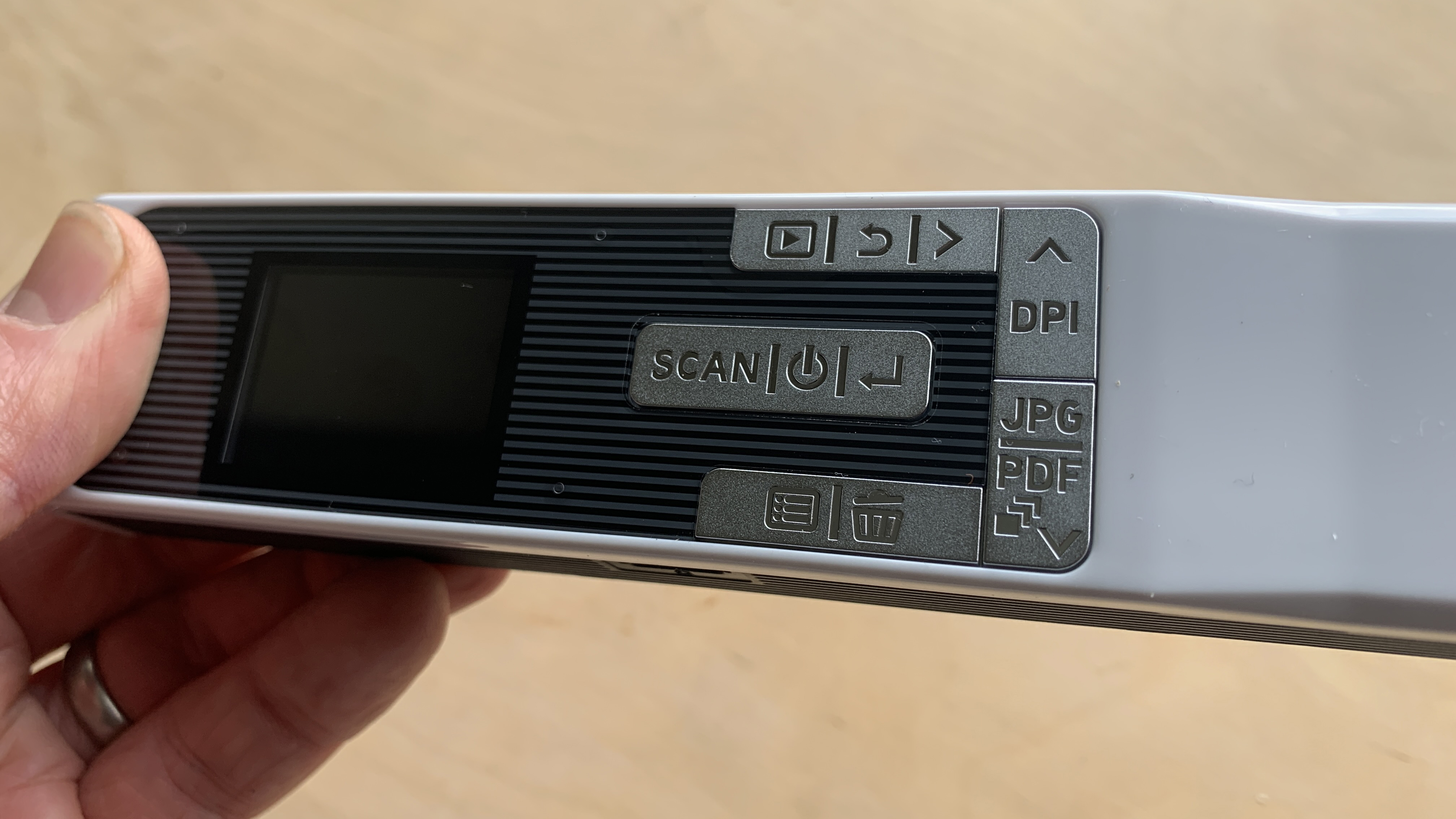
The USB slot performs very well, with minimal possible movement on the inserted cable. Equally, the microSD card is well engineered, making it incredibly easy to insert and take out the card.
The unit, as a whole, is ideal for performing multiple scans in succession. Thanks to its weight, there is very little danger of muscle strain, and the interface makes it relatively easy to operate. I would be a little concerned about the longevity of the device, but if you're careful with it in terms of use and storage, then you shouldn't have any problems.
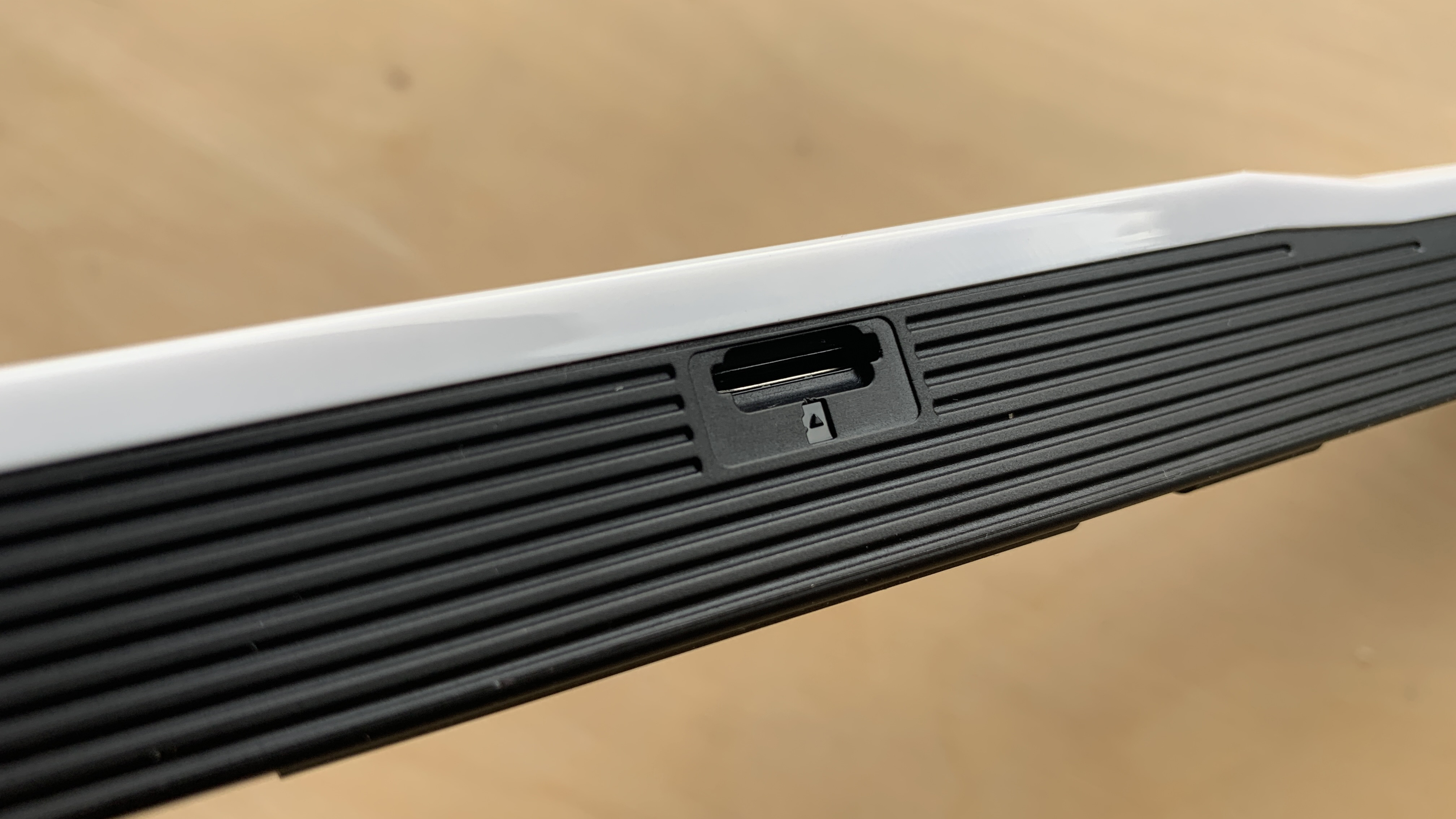
IRIScan Book 5: Performance
The Book 5 performs very well. 1200 dpi scanning capability sets the scanner apart from many of its competitors. Scanning results during tests were fairly good, with no issues in terms of legibility or resolution. My scans did suffer from horizontal lines across the entirety of the scan, but these were not particularly distracting from the clarity of the overall scan. The color replication of photos and colored text was also pretty accurate. I found the scanner to be easy to use, and I had no problem operating it.

IRIScan Book 5: Verdict
The IRIScan Book 5 scanner is a fantastic wand scanner that delivers great resolution scans with accurate color replication. The build quality sits in the middle between cheap and premium, with some parts of the device susceptible to damage if users are not careful.
The battery life is also a serious weak point. A full charge will achieve around 100-300 dpi scans, but this drops significantly if you increase the resolution. I found the battery to be the biggest bugbear with this device. It took a while to charge, and the battery would unpredictably cut out sooner than I expected. All of this can be managed, though.
In terms of its core purpose, the Book 5 produces high-quality scans with a lightweight body that makes it ideal for a wide range of users.
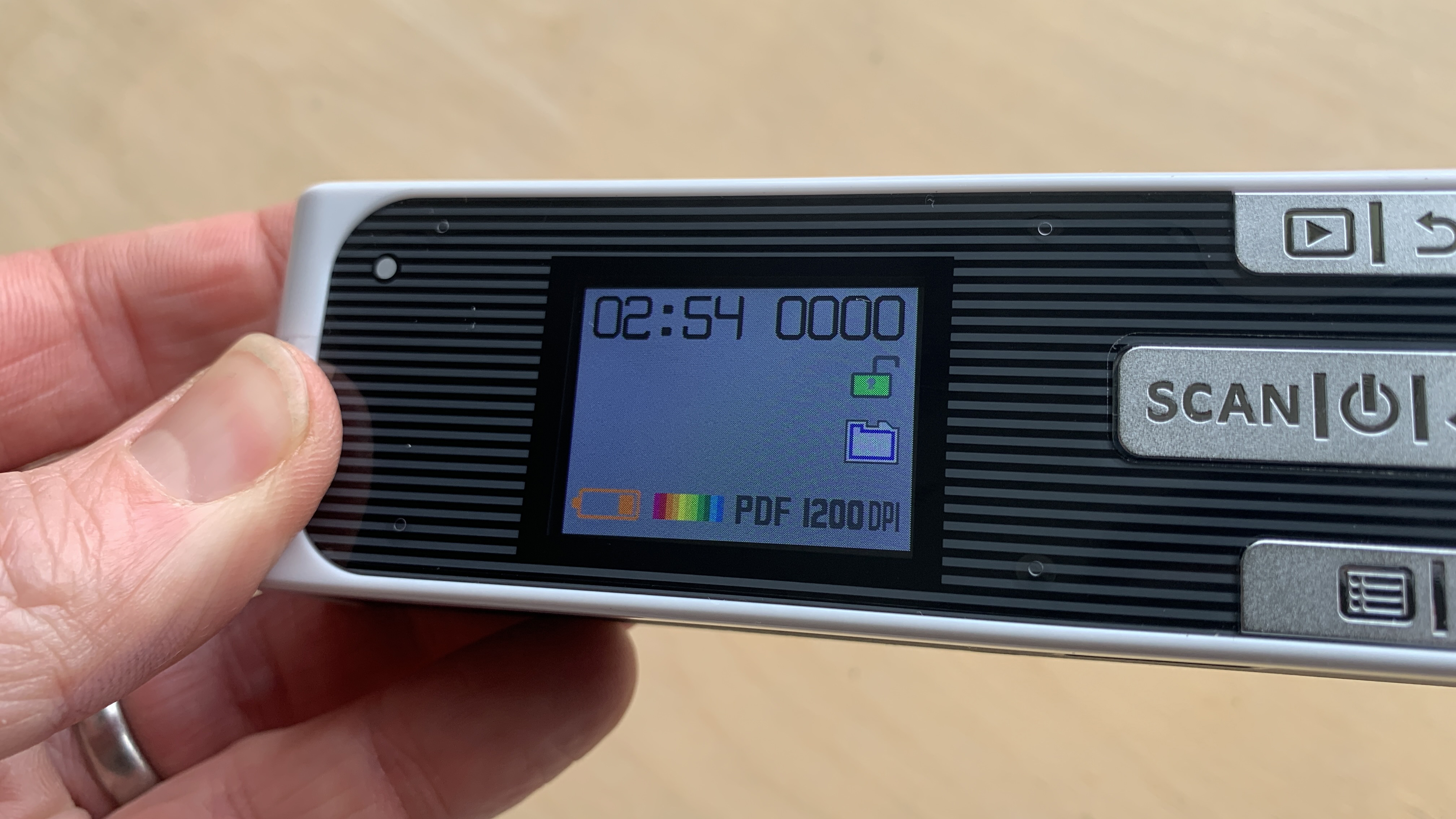

Paul is a digital expert. In the 20 years since he graduated with a first-class honours degree in Computer Science, Paul has been actively involved in a variety of different tech and creative industries that make him the go-to guy for reviews, opinion pieces, and featured articles. With a particular love of all things visual, including photography, videography, and 3D visualisation Paul is never far from a camera or other piece of tech that gets his creative juices going. You'll also find his writing in other places, including Creative Bloq, Digital Camera World, and 3D World Magazine.
